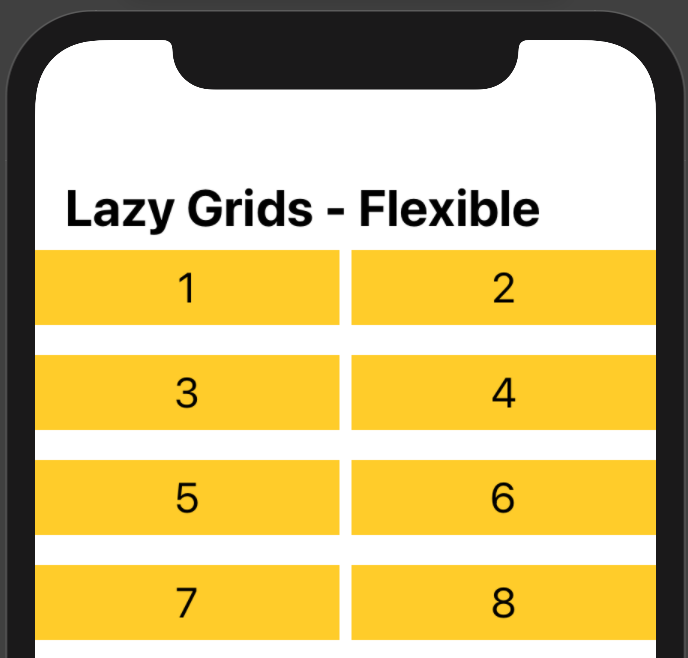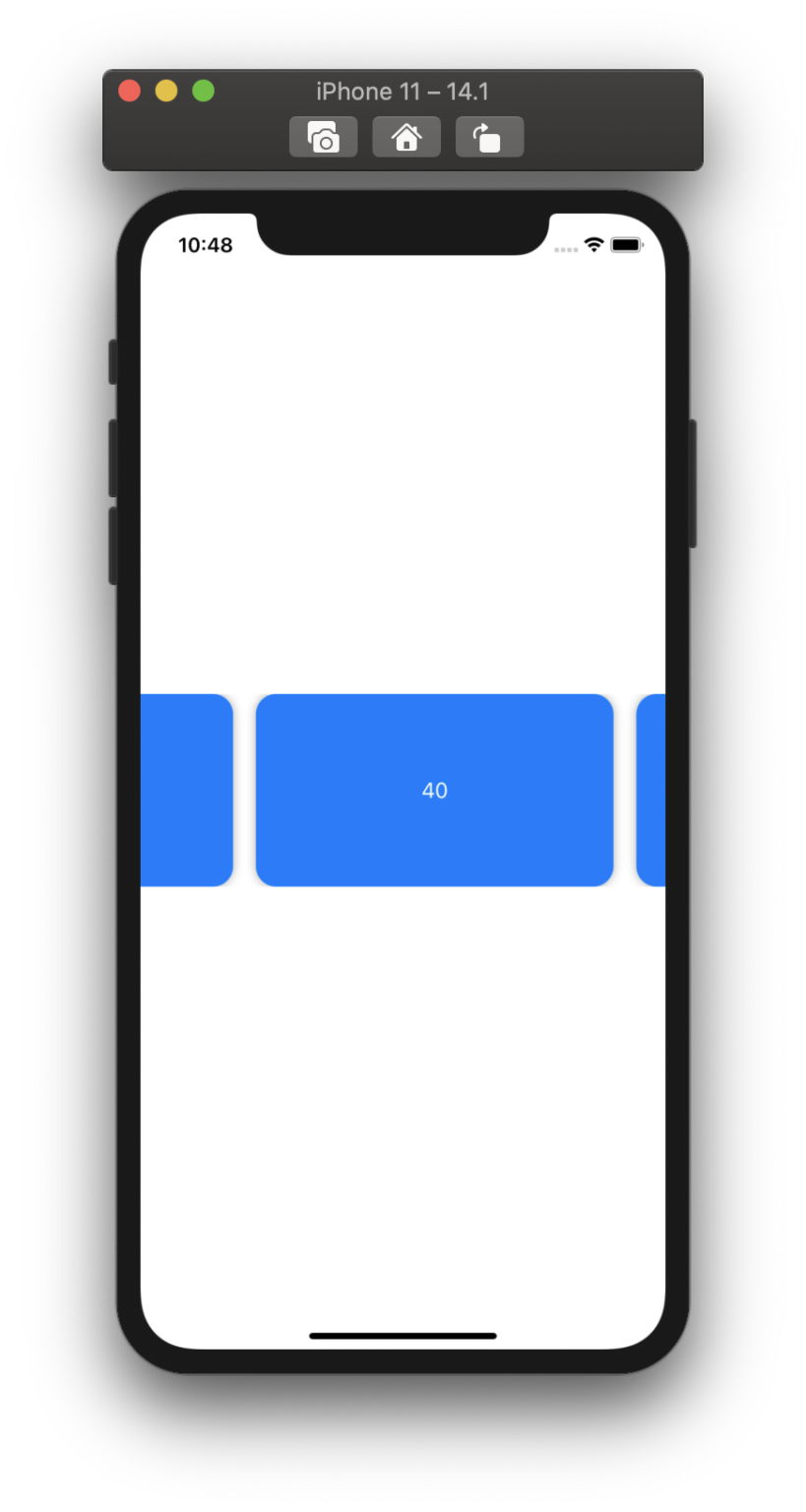

The value of spacing works as a multiplier to the library’s grid system (base of 4px). Spacing in between each child can be adjusted by using spacing. The amount of space between each child element. In the example below, flex-start will align the children content to the left. Horizontally aligns content if the direction is row, or vertically aligns content if the direction is column. expanded: booleanĮxpands to the maximum available width (if horizontal) or height (if vertical). column will align children vertically and row will align children horizontally. To test performance, were creating 10,000 rows stacked vertically using a LazyVStack that is embedded inside a ScrollView. The direction flow of the children content can be adjusted with direction. stretch: Stretches content to the edges of the container.edge: Aligns content to the edges of the container.

bottomRight: Aligns content to the bottom/right.bottomLeft: Aligns content to the bottom/left.A HStack which stacks views horizontally across the screen, a VStack which stacks views vertically, and a ZStack which layers stacks on top of each other going in to. Well, I will bring out Expanding Lists, Map Kit, Scrolling Page, Color Picker, LazyVStack & LazyHStack for this tutorial. topRight: Aligns content to the top/right. The compiler will get confused and see that two views are trying to be returned when only one is expected.topLeft: Aligns content to the top/left.

Last week, we took a closer look at how UIKit views can be imported into the declarative world of SwiftUI, which both gives us an opportunity to reuse existing UIView -based components, and also acts as an important escape hatch for when SwiftUI does not yet support a given use case. Top ↑ Props alignment: HStackAlignment | CSSPropertiesĭetermines how the child elements are aligned. SwiftUI and UIKit interoperability - Part 2.
LAZY VSTACK HOW TO
You may choose to add more if you would like but for now, this is the game plan.Expand full source code Collapse full source code I have given you a brief overview of SwiftUI and showed you how to work with some basic UI components including the vertical stack view (i.e. If you want to load content lazily i.e., only when it scr. As you can see some of the static data contain some influential people such as Steve Job, Jeff Bezos and so on. By default, SwiftUI’s VStack and HStack load all their contents upfront, which is likely to be slow if you use them inside a scroll view. Let’s create a model called People and add some static data. You could have a quick glance of what you will be creating. So you came up with this idea of building an app to recognise all these good people. There are multiple companies in the world that are making difference and you would like people to notice the good thing that they have done. SwiftUI 2. To follow along this tutorial, you’ll need some basic knowledge in: LazyVGrid and LazyHGrid in SwiftUI are the new Views in the latest SwiftUI 2.0 as you might imagine they can only work on iOS 14. In summary, use LazyHStack if you have a huge amount of data and HStack when you have a considerable small amount of data.Ī view that arranges its children in a line that grows horizontally, creating items only as needed. If you want to load content lazily i.e., only when it. Just think of it this way, if you have a huge load of data, the ideal way is to load what you see only which is what LazyHStack is doing and as you scroll, you will load the data. By default, SwiftUI’s VStack and HStack load all their contents up front, which is likely to be slow if you use them inside a scroll view. Within the horizontal Scroll-View, we have added a Lazy-H-Grid The recipes cover the foundations of SwiftUI as well as the new SwiftUI 2 Ill sum it up this way: I frequently oscillate between thinking 'This is amazing, it truly is a joy to work with SwiftUI' and 'Holy FUCK this is the most infuriating thing Ive ever experienced in my life'. I wonder if its bug in the implementation of the lazy stacks when you refresh the item. On the other hand, HStack is a little opposite with this, it loads everything. I cant reproduce the issue with VStack instead of LazyVStack. Lazy in many instance means if you are not you are not seeing it in your screen, it is not being loaded which in turn increases performances. One alternative was using the List component, which implements lazy loading, and I wrote something about infinite scrolling you may want to check out. Those components load all their children up front, so they’re not suitable for implementing a long list of items, as you’d rather have lazy loading. LazyHStack behaviour is similar with HStack with the exception of lazy. SwiftUI introduced from the very beginning the components HStack and VStack to group views in an horizontal or vertical stack. In the recent WWDC 2020, Apple introduced an LazyHStack which in my opinion is an improved version of HStack due to its advantage in performance.


 0 kommentar(er)
0 kommentar(er)
